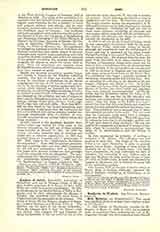

Boni Homines (or BONSHOMMES).—This name was popularly given to at least three religious orders in the Church:
I.—THE ORDER OF GRANDMONT, founded by St. Stephen of Muret (b. 1046, d. 1124) for an austere order of eremitical friars professing the rule of St. Augustine (though they have sometimes been claimed also by the Benedictines). Towards the end of the twelfth century they possessed more than sixty houses, principally in Aquitaine, Anjou, and Normandy. The kings of England (then rulers of Normandy) were great benefactors of these friars, who were known as the Bonshommes of Grandmont from the earliest times. The oldest house of the order was at Vincennes (founded by Louis VII, in 1164); and this more than four centuries later came into the possession of the Minims, who were hence known afterwards as Bonshommes. The observance of the order had become greatly relaxed when a general chapter was held at Grandmont (after an interval of more than a century) in 1643, with the object of reestablishing regular discipline. New statutes, modifying the original rigour of the rule, were drawn up and approved. The habit of the order was black, with a hood and a broad scapular. At the time when Helyot wrote his great work on the religious orders (1714-21) there were in France also three houses of nuns of the Order of Grandmont; but both monasteries and convents were suppressed at the Revolution sixty years later. A reformed branch of the order was established in 1642 by Pere Fremont, but the members of this institution do not seem to have been known by the old name of Bonshommes.
II.—THE FRATRES SACCATI, or BROTHERS OF PENITENCE, were also known as Boni Homines, Bonshommes, or, as Leland calls them, Bones-homes. Their origin, as well as the date of their foundation, is obscure, but they had a house at Saragossa in the time of Pope Innocent III (d. 1216) and one about the same time at Valenciennes. Their rule was founded on that of St. Augustine. They had one house in Paris, in a street called after them the rue des Sachettes, and in 1257 they were introduced into England. Matthew Paris records under this year that “a certain new and unknown order of friars appeared in London“, duly furnished with credentials from the pope; and he mentions later that they were called from the style of their habit Fratres Saccati. We learn from Polydore Vergil that Edmund (son of Richard, Earl of Cornwall) founded a little later (according to Tanner, in 1283) a monastery at Ashridge, Herts, for a rector and twenty canons of “a new order not before seen in England, and called the Boni homines”. It was finished in 1285. The first rector was Richard, and the last Thomas Waterhouse (1529), who surrendered the house to Henry VIII. The suppressed college was granted first to the king’s sister Elizabeth, and afterwards to the Egertons, later created Earls and Dukes of Bridgewater. The church was destroyed under Elizabeth; but in 1800 the last duke was living in a portion of the old college. He sold the great hall piecemeal, and pulled down the cloisters. The estate and (modern) mansion now belong to Earl Brownlow. The only other English house of the Boni Homines was at Edington in Wilts. The former college there (consisting of a dean and prebendaries) was granted to them by desire of Edward the Black Prince, who (says Leland) “had a great favor to the Bones-homes beyond the Se”. The first rector (brought from Ashridge) was John de Aylesbury, the last John Ryve. Edward VI granted the property to Lord St. John; it now belongs to the Watson-Taylor family. The splendid church, one of the finest of its period, still remains. (Little, The Friars of the Sack, in Eng. Hist. Review, 1894, 33, 121.)
III. THE PORTUGUESE BONI HOMINES.—The identity of the Fratres Saccati mentioned by Matthew Paris as, in 1257, a “new order in England“, with the “new order” (the Bonshommes) established a little later at Ashridge and Edington, seems to be generally admitted. An entirely separate institute, however, was that of the Portuguese Boni Homines, or Secular Canons of St. John the Evangelist, founded by John de Vicenza, afterwards Bishop of Lamego, in the fifteenth century. Living at first independently in a monastery granted to them by the Archbishop of Braga at Villar de Frades, they afterwards embraced the institute of Secular Canons of St. George in Alga (in Venice), and the Portuguese order was confirmed by Pope Martin V under the title of “Boni Homines of Villar de Frades”. They had fourteen houses in Portugal, and King John III gave them charge of all the royal hospitals in the kingdom, while many of the canons went out as missionaries to India and Ethiopia. Several members of the order have won a high reputation as scholars and theologians.
D. O. HUNTER-BLAIR.

